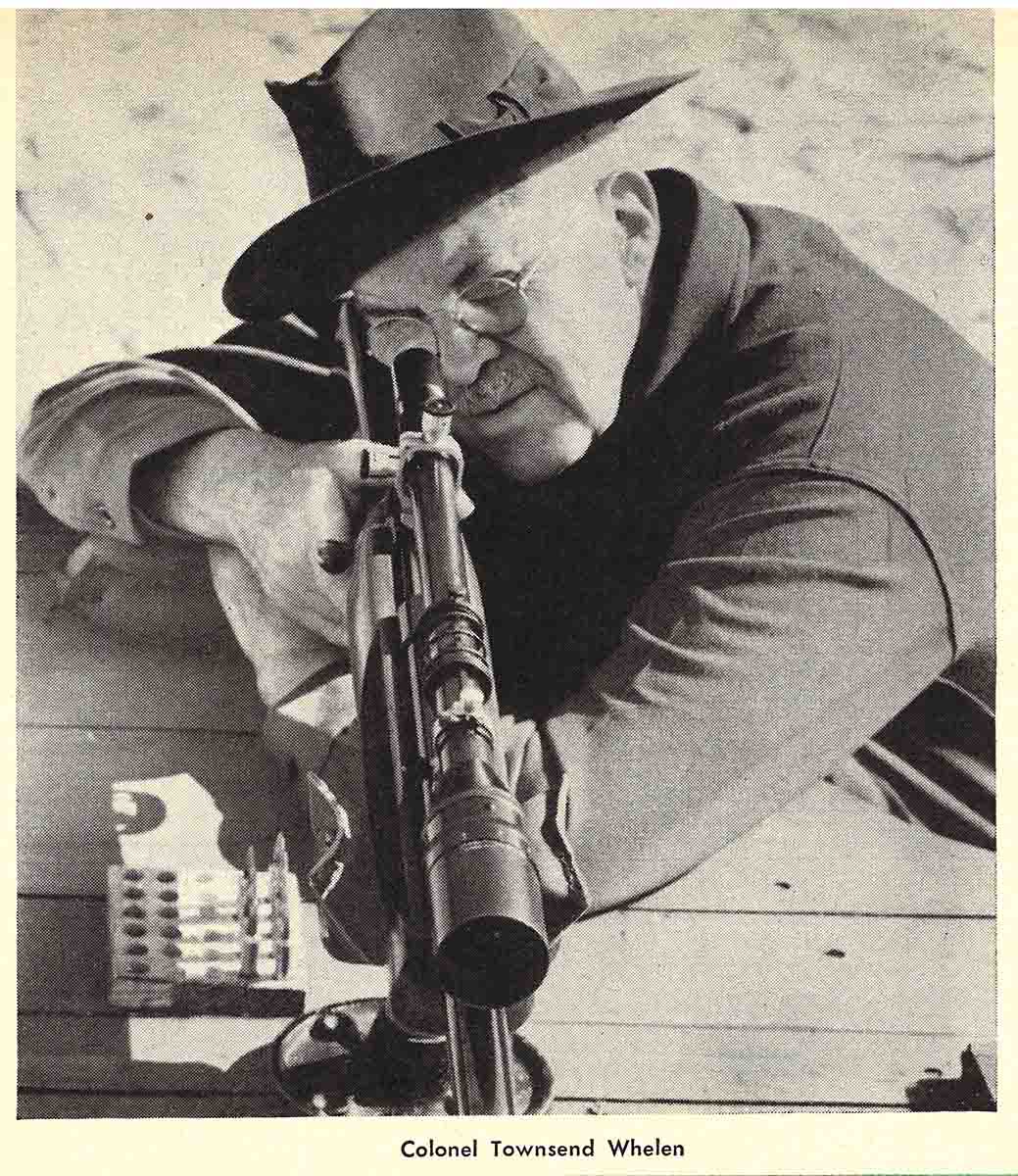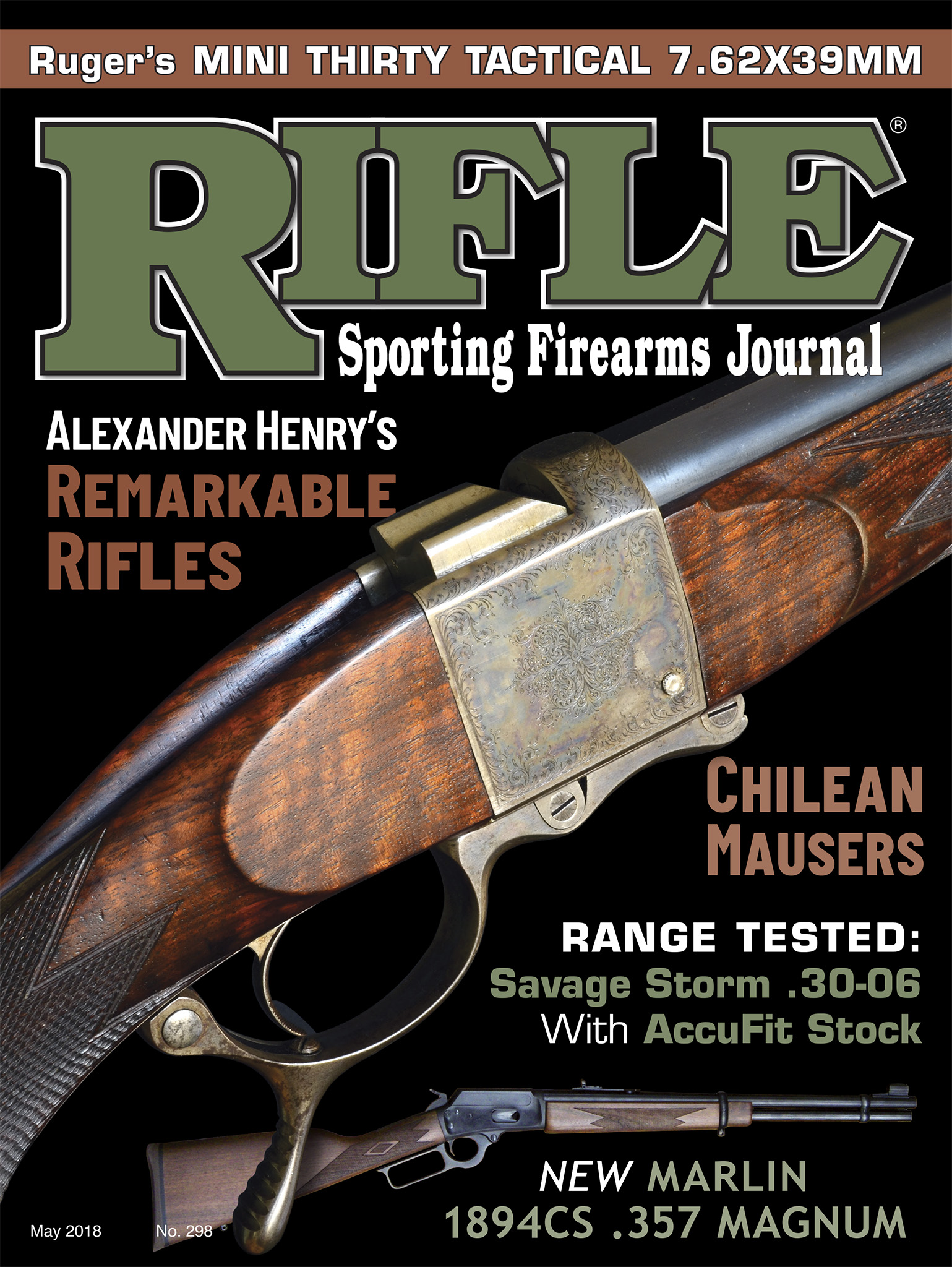Spotting Scope
“Only Accurate Rifles Are Interesting” - Wilderness Hunting & Wildcraft, 1927
column By: Dave Scovill | May, 18
The first time I saw the now-infamous statement by Colonel Townsend Whelen sometime in the mid-1970s on the masthead page of Rifle magazine, it struck me as interesting, mostly because I had no idea what it meant. Accuracy for what – deer, varmints, targets or whatever? I had a vague idea of who Col. Whelen was, but the only photos I had seen were of an older man wearing glasses with lenses as thick as the bottom of a beverage bottle. I recall thinking, So this is the guy who framed the subject of accuracy for the rest of us?
Shortly after I came across that copy of Rifle, the owner of a local gun shop loaned me a stack of older American Rifleman magazines, where Col. Whelen was listed among the staff members of the “Dope Bag” column. I had been on active duty for a few years, mostly on islands in the Pacific, and was interested in what had been going on in the firearms industry while I was somewhat sequestered from civilization.

Perusing older NRA magazines, questions regarding accuracy came up regularly, including lever actions. I had owned and used a few lever actions over the years, and Whelen’s comment to a reader regarding accuracy with factory loads in the .30 WCF, .32 WCF and .348 WCF, something in the range of 3 to 4 inches at 100 yards, suggested those glasses must be affecting his vision. Then too, Whelen stated the .25-35 WCF was capable of 1.5 to 2 inches at the same range, so his vision couldn’t have been that bad. Maybe he fired the .30 WCF, etc., offhand and shot the .25-35 WCF from a rest or from prone, since it was considered by some writers to be more of a “varmint” cartridge.
Who knows? Whelen also said good things about the .219 Zipper and .22 Hornet, but as I was to learn later, he was in on the development of the latter in a Springfield, a rifle he obviously admired and respected.
Further reading suggested Whelen was a bit of a woods bum and wrote about cast-bullet, small-game loads for his ’03 Springfield that effectively duplicated loads I had used in a Winchester Model 94 .30 WCF carbine for “desert bumming” in pursuit of jackrabbits, coyotes and badgers. The difference was that my .30 WCF loads were apparently more accurate than his ’03 loads. So, it appears, Whelen could accept some degree of marginal accuracy from his prized ’03 but was pretty quick to write the lever action off as a lost cause.
At any rate, it remained a mystery as to what the word “accuracy” meant. Maybe it was intended to motivate folks to upgrade accuracy standards, but to what level? Compared to soup cans, rabbits or squirrels, a deer was/is a sizable target, and a bull elk was more or less like shooting at a barn door. I also understood that a good number of deer encountered during open season were moving, walking or running, so it was clearly more of an issue to get a bullet into the bucket-sized lung/heart area as quickly as possible. The locals in rural Oregon often referred to it as “snap” shooting. If you waited for a game animal to stop broadside, you were likely to go home empty handed. This brings to mind Whelen’s other quote, and to my way of thinking, his best and the one some modern writers are apparently unaware of: “Good shots are made, not born.”
Catching up on back issues of Rifle magazine from the local gun shop, it was reasonably apparent what Col. Whelen was hinting at when an article appeared in Rifle No. 33 (May/June 1974) by then-editor Neal Knox, who wrote a piece on the “one-hole” group that was fired in a National Benchrest Shooters Association (NBRSA)-sanctioned match as .009 inch by M.P. McMillan. A bit later that same year (Nov-Dec 1974),
Knox won all the marbles in the NBRSA Nationals with the top .2980-inch Sporter and Light Varmint aggregate, without winning a single match! Taken together, the McMilan one-hole group and the Knox championship represent real-world accuracy potential with rifles and ammunition that effectively represent zero tolerance. That’s miles from what folks can expect to find at the local sporting goods outlet. Still, they might be used to establish a base for the term “accurate.” Although it is doubtful that is the issue Col. Whelen was addressing.
Of course, the chances of purchasing a rifle off the rack that shoots into the .2s or .3s with factory ammunition is slim to none, with the exception of the Sako 6mm PPC, so realistically it makes more sense to be satisfied with .5- to 1.0-inch, three- or five-shot groups at 100 yards, although it is often a challenge to do that repeatedly, even for the most experienced among us.
Obviously, that only applies to shooting from some sort of solid rest or a bipod attachment, the latter of which sometimes causes accuracy to go into a tail spin. Nowadays, however, considering the benchrest mentality over long-range accuracy, etc., that reeks from the gun-press pretty much precludes any chance that anyone will spend much time shooting from field positions: kneeling, sitting, prone or, heaven forbid, standing – just the opposite of what some of us “old timers” were taught. I remember my stepbrother Allan and I, at ages 8 and 11, respectively, nearly wiping out the prairie dog population near our home near London, Oregon, with our .22 rifles, burning through a brick of Peters .22 Long Rifle with open sights shooting offhand where tall grass precluded shots from prone or sitting positions.
In retrospect, it’s interesting that pundits in this modern day and age still quote Townsend Whelen, probably because it is rather catchy prose. More interestingly, however, is that no other modern outdoor hunting scribe appears to have earned the sort of credibility attached to Whelen, not to ignore Hatcher, Keith, Sharpe, Crossman and others of that era, who served as the backbone for the NRA “Dope Bag” column for so many years. That is to suggest, apparently, no modern writer has written anything worth quoting.


